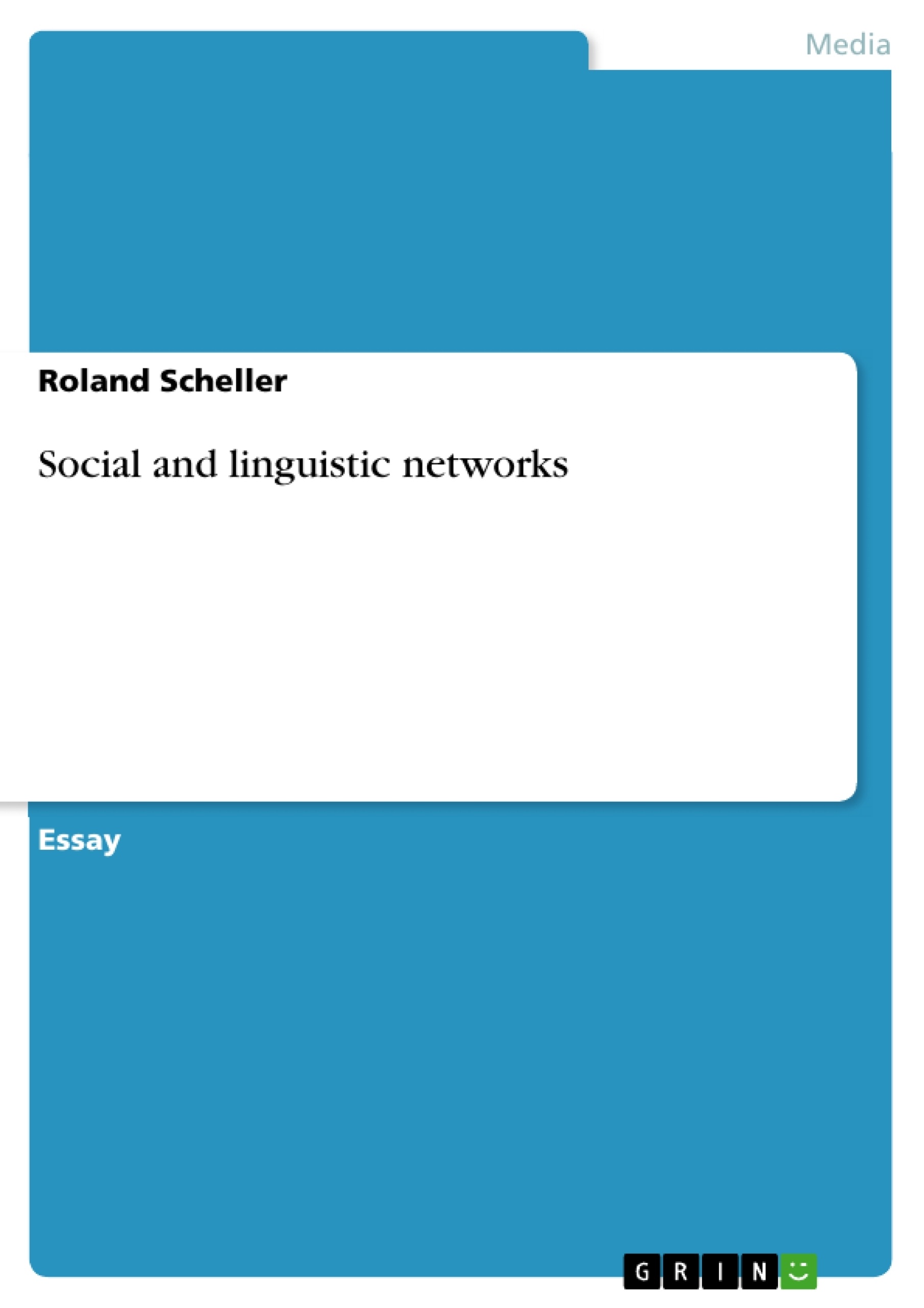Every human being participates in society and has relations to other human beings. What makes us human is the ability to speak. In order to communicate, people have to find a shared language. There is the fiction of Daniel Defoe's “Robinson Crusoe”, but this is an exception. For to survive and to earn our daily bread we have to express our will and organise ourselves. In modern linguistics the expression network is very common. Every human being participates in a more or less elaborated network. The expression network has got its origin in computer science. There we talk about computer networks. It is possible to combine computers with each other and they can exchange information. This essay is about linguistic networks, that are networks between human beings. In order to discuss the notions “network” and “network relations” I refer to my own experiences on a typical Monday during semester time at Cardiff University. I also want to mention code-switching and describe a classical model of a linguistic network: William Labov’s “Social Stratification of (r) in New York City Department Stores”. Last but not least I want to criticise the choice of parameters for quality of linguistic networks in linguistics. Why do linguists not discuss the emotional quality of networks?
Inhaltsverzeichnis (Table of Contents)
- Introduction
- Main Part
- Computer Science
- The Model of William Labov
- Accommodation Theory
- My Personal Network: Plexity and Density
- Code-switching
Zielsetzung und Themenschwerpunkte (Objectives and Key Themes)
This essay aims to analyze the concepts of "network" and "network relations" within sociolinguistic studies by using relevant literature. The essay focuses on a specific model of representing social and linguistic networks and then applies this model to the author's own experiences on a typical Monday during semester time. The essay also explores the phenomena of code-switching and accommodation theory.- The application of network theory to sociolinguistics.
- Analyzing different varieties of language used in a typical Monday during semester time.
- Exploring the concepts of plexity, density, and accommodation within social and linguistic networks.
- Discussing code-switching as a linguistic phenomenon.
- Evaluating the parameters for quality of linguistic networks in linguistics.
Zusammenfassung der Kapitel (Chapter Summaries)
- Introduction: This introductory section defines the concept of "network" as it pertains to linguistics, highlighting its origins in computer science and how it applies to human interaction. The essay introduces the author's experiences on a typical Monday during semester time at Cardiff University as a case study, along with the concepts of code-switching and Labov's model of social and linguistic networks.
- Computer Science: This section draws parallels between computer networks and linguistic networks, emphasizing the need for at least three interconnected points for information exchange. The concept of a "network" is further elaborated, highlighting the importance of feedback and the difference from simpler dual communication models.
- The Model of William Labov: This section analyzes Labov's study "Social Stratification of (r) in New York City Department Stores," examining his findings on the correlation between social stratification and the use of the (r) sound. Labov's model is seen as a precursor to modern understanding of social and linguistic networks, although it was not explicitly termed as such at the time.
- Accommodation Theory: This section connects Labov's findings with the concept of accommodation theory, explaining how individuals adjust their speech patterns to match those of their interlocutors, particularly in situations where social approval is desired. This is exemplified by the behavior of salesgirls in department stores who tend to emulate the prestigious use of (r) to align with their customers.
- My Personal Network: Plexity and Density: This section applies the concepts of plexity and density to the author's personal network on a typical Monday during semester time. The author describes his social interactions, from encounters with housemates to conversations with shop assistants and classmates. He analyzes the density of these networks based on the frequency and depth of interactions, highlighting differences in the extent to which individuals know and interact with each other.
Schlüsselwörter (Keywords)
The primary focus of this essay is on exploring the concepts of "network" and "network relations" as they pertain to sociolinguistic studies. The essay examines relevant literature, particularly Labov's model of social stratification of (r) in New York City department stores, and applies this model to the author's own experiences to illustrate concepts like accommodation theory, code-switching, plexity, and density within linguistic networks.- Quote paper
- Dr. phil. Roland Scheller (Author), 2000, Social and linguistic networks, Munich, GRIN Verlag, https://www.grin.com/document/277756



